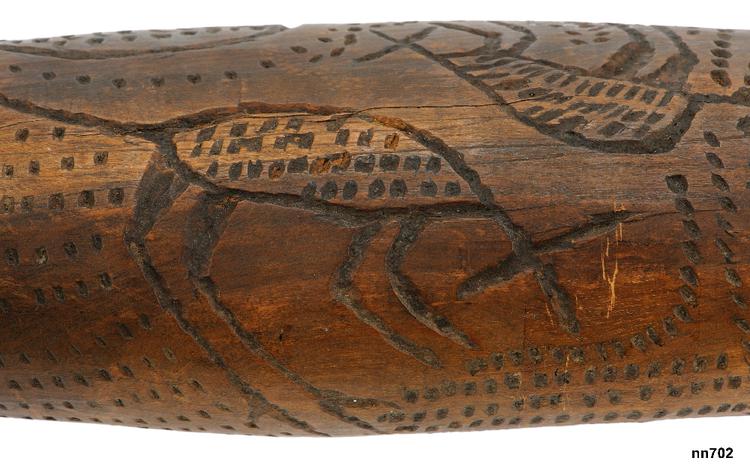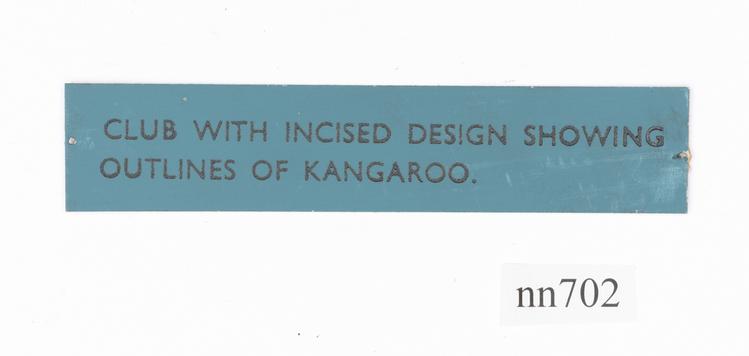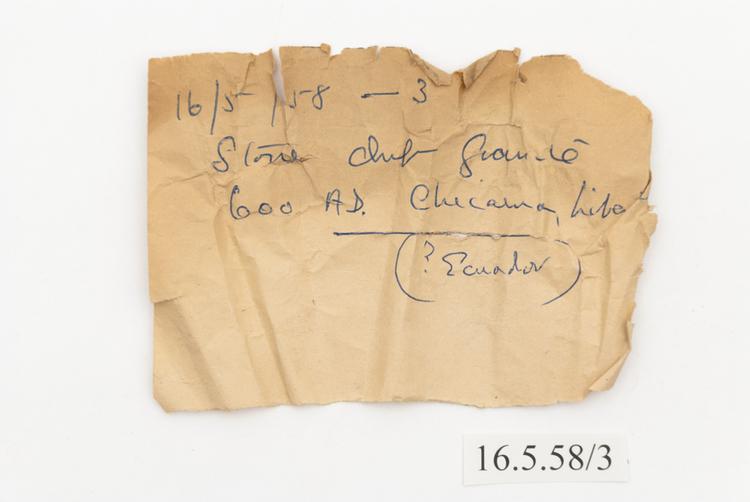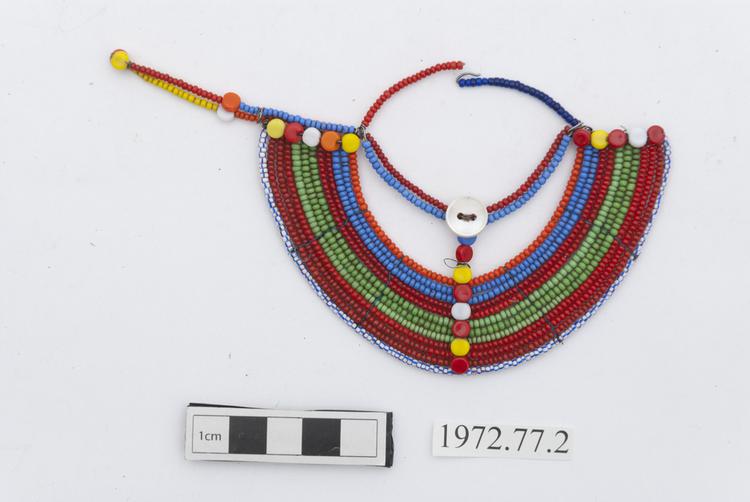



Club from Australia of ovate section with an expanded head closing to a conical point. The head has been decorated with four kangeroos and a multitude of small square punctures impressed, possibly with an iron nail. The grip is lightly cross hatched with fine lines and a pommel has been created by cutting a deep circumferential groove near the butt.
label: blue exhibition label with black type
Throwing Club, Northern Territory, Australia The Aboriginal societies of Australia were not heavy users of clubs, being, in truth, spearmen by choice. Having said this, many fine styles of club were made on the continent, and this is a fine example. It is a throwing club, shaped slightly like a juggler’s club for the same smooth flight when hurled, and flattened slightly at the head. Clubs similar to this were produced in several parts of the world. They have the virtue of being useable by most trained people to the distance at which many animals believe themselves safe from attack – some ten to fifteen metres. For a forewarned human victim, they fly quite slowly and are easily dodged or deflected, and so they never featured very prominently in Aboriginal warfare. They were as effective as any other short club in the hand, however. This example has the added interest of being engraved with attractive kangaroo or wallaby motifs, perhaps an indication of the prey taken with it. Wood. Early 20th Century. Provenance unknown.
fighting






